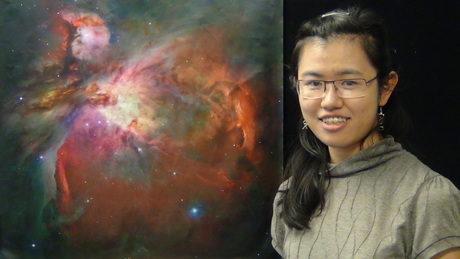2015 Extreme Imaging Competition winners announced

The winners of the 2015 Extreme Imaging Competition were announced last week at The International Conference on Digital Image Computing: Techniques and Applications (DICTA), held in Adelaide.
The annual competition, an initiative by Canon Information Systems Research (CiSRA), is open to Australian university students who are producing images as part of their research project. According to Yusuke Mizoguchi, chairman of CiSRA and managing director of Canon Oceania, the competition encourages students to implement new ways of thinking and use imaging technology to solve real-world problems.
The DICTA Winner was awarded to University of Queensland student Sam Hames and his supervisors for their work in reflectance confocal microscopes — tools for examining the cells of the skin without surgery. While the microscopes can be used for examining a variety of skin diseases, such as melanoma, sun spots and psoriasis, the challenge is dealing with the volume of images acquired and the lower image quality compared to conventional approaches.
Hames’ work addresses this problem by developing tools that automatically extract information from the microscopy images. The automated measurements help doctors make decisions. The project demonstrates automated measurement of skin thickness without needing an expert to spend lots of time annotating the images, and may lead to the development of automated tools for diagnosing skin disease.
The DICTA Runner Up prize went to James Cook University student Alex Olsen and his supervisor for their classification of aggressive weeds. Olsen’s project involves the installation of leaf recognition cameras combined with herbicide sprayers onto a vehicle which is then deployed in a problem zone and can effectively detect the weed and treat without damaging the native flora. The imaging method correctly recognised the weed Lantana camara in almost 90% of images in the collected data set.
The Open Winner prize was awarded to Cleo Loi and her supervisor, from the Sydney Institute for Astronomy at the University of Sydney, for their work surrounding the Murchison Widefield Array (MWA). The MWA is a telescope that takes pictures using radio waves. Electrons floating around in the Earth’s atmosphere distort radio signals passing through it.
Loi used imaging technology to analyse the distortions and found that they were created by huge tubular structures in the sky where electrons were congregated, like dunes formed within a sea of sand. She also discovered that the telescope could also be used like a stereo camera to find 3D information.
Finally, the Open Winner Runner Up was University of Western Australia student Naveed Akhtar and his supervisor for increasing the resolution of hyperspectral cameras on satellites 32 times to extreme detail. Hyperspectral cameras can see hundreds of different colours, including those that are invisible to the human eye. This advancement can significantly boost the use of hyperspectral imaging technology in remote sensing, medical imaging and robotic vision.
Mizoguchi said it was “a privilege for Canon to be able to support the next generation of leading Australian scientists”.
Optics11 Life appoints Jacquelien ten Dam as CEO
Optics11 Life plans to accelerate its commercial growth in key markets while building strategic...
Epilepsy pioneer elected President of Aust Academy of Science
Laureate Professor Sam Berkovic — one of the world's most respected neurologists...
CSIRO announces 300+ job cuts as part of restructure
CSIRO will need to reduce roles in its Research Units by 300–350 full-time equivalent staff...




